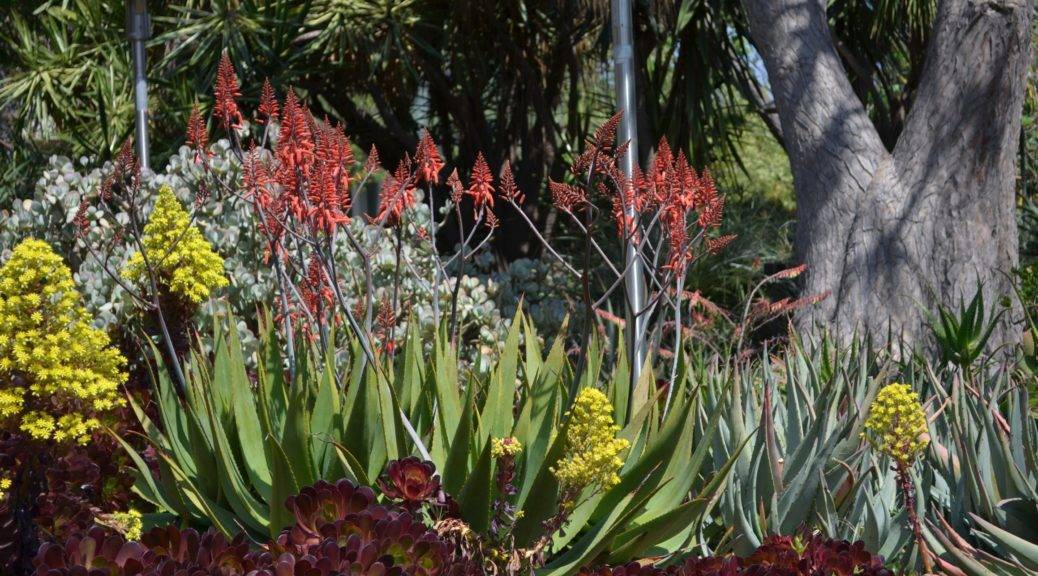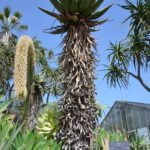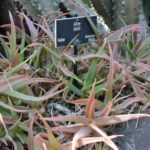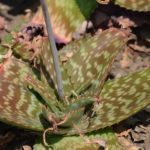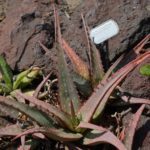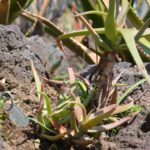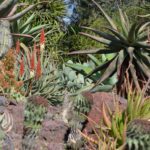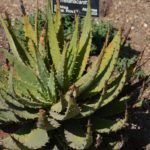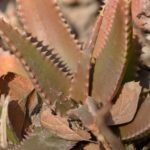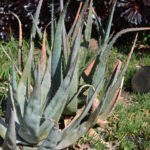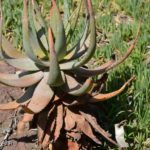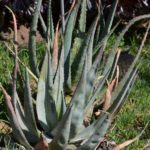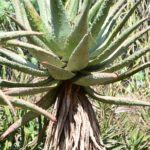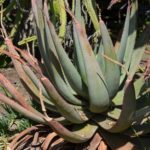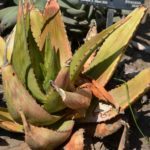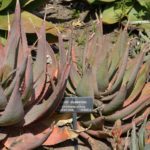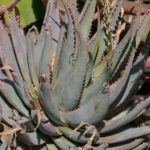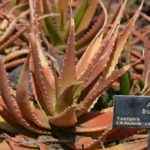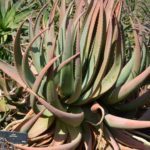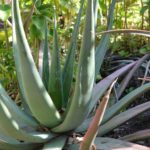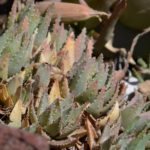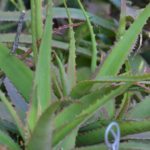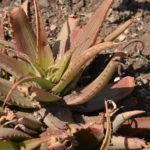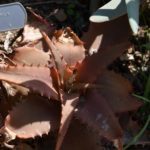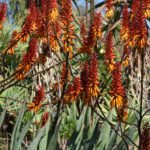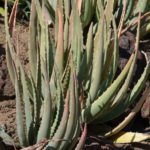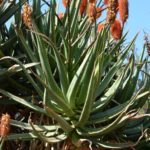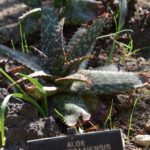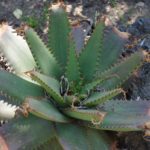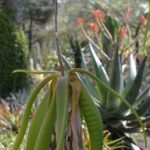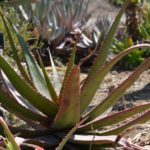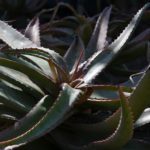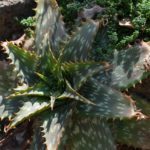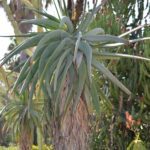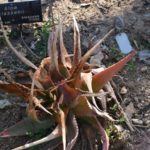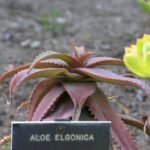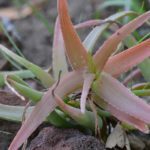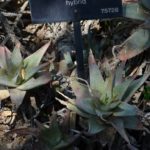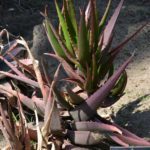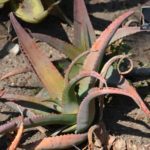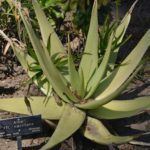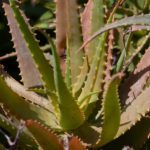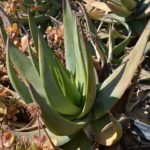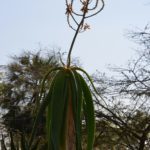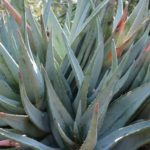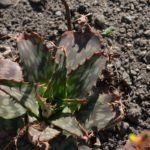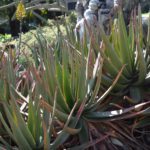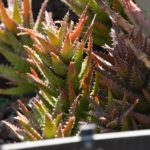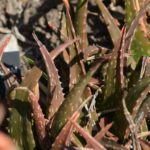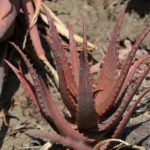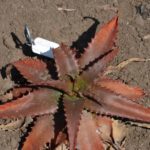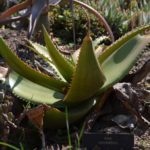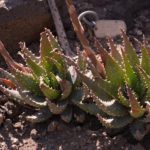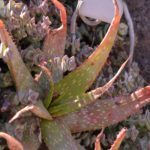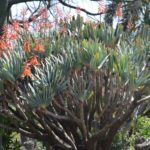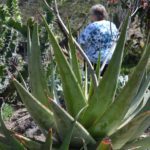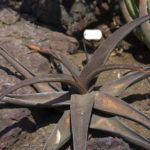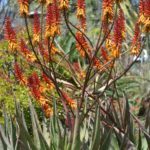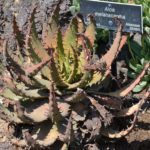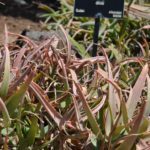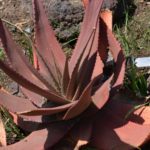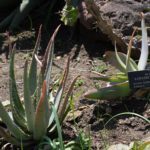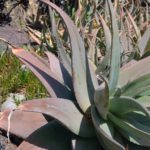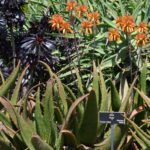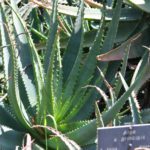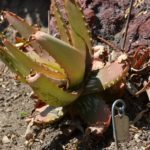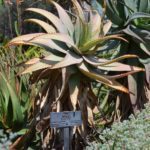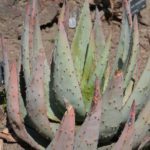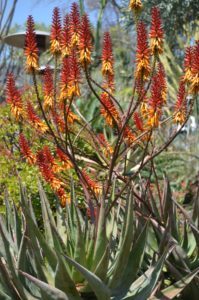
Aloes are some of the most striking plants in the dry landscapes of Africa, there are over 500 species of flowering succulent plants. Aloes come in a variety of growth forms, from small to tall single-stemmed or branched trees. The leaves of the aloe are lance or sword-shaped in outline and boat-shaped in cross-section. Most Aloe species have a rosette with large and thick fleshy leaves, the flowers are tubular and are frequently yellow, orange, pink and red.
Aloes are xerophytes with structural and physiological adaptations for survival. The majority of Aloe species are found in arid or semi-arid regions. They occur in a wide range of habitats, including dry forests, open woodland, grassland, bare rock surfaces and cliff faces. Some grow near the coast, almost at sea level, and only a few occur at altitudes up to 10,000 feet.
DISTRIBUTION OF ALOES
The genus of Aloe occurs throughout most of Africa south of the Sahara Desert, in the Arabian Peninsula, on Madagascar and smaller islands in the Indian Ocean. The most widespread of the aloes is Aloe myriacantha, which is found in northern Kenya and down to the southeastern parts of the Republic of South Africa in Eastern Cape Province.
USES OF ALOES
One of the most frequent and widespread use of aloes is as an ornamental plant, some artificial hybrids have been created for this purpose. Many species are used for landscaping in tropical and sub-tropical climates and as general landscapes and container gardens in areas with low or erratic rainfall. Many different soil types support aloes in the wild, though most species are tolerant of any kind of soil in cultivation. Some arborescent species are used as street trees in Africa i.e., Aloe bainesii and A. dichotoma. Smaller growing species are best suited for an indoor windowsill plant such as Aloe aristata.
The second most frequent use of aloes is as an medicinal herb. Aloes have been collected for their medicinal qualities since classic times and as ornamentals for several hundred years. aloe species contain compounds that are of medicinal value, and traditional healers have used the plants in herbal medicine for centuries. In medicinal history Aloe vera has been cultivated around the tropics and sub-tropics as a medicinal plant for over 2500 years, this aloe species has been used for treating burns, rashes, acne, psoriases, rosacea, athletes foot and insect bits.
ALOE CHARACTERISTICS
Most aloe species are leaf succulent xerophytes, having conspicuously fleshy leaves. Only a few grass aloes such as Aloe myriacantha have leaves that are small and not fleshy. Aloe leaves are simple usually with marginal teeth and in some species with teeth or prickles on the leaf surface. Leaves may be rosulate or dispersed along the stem. Many rosulate species are described as acaulescent which means that the stem is so short that only the leaf rosette can be seen as the plant.

